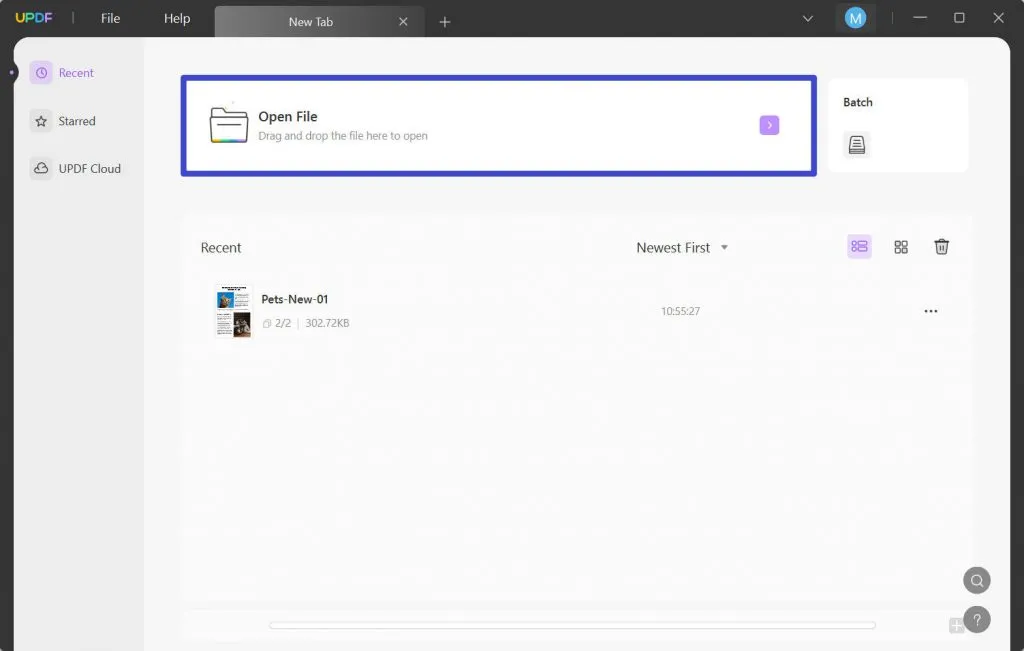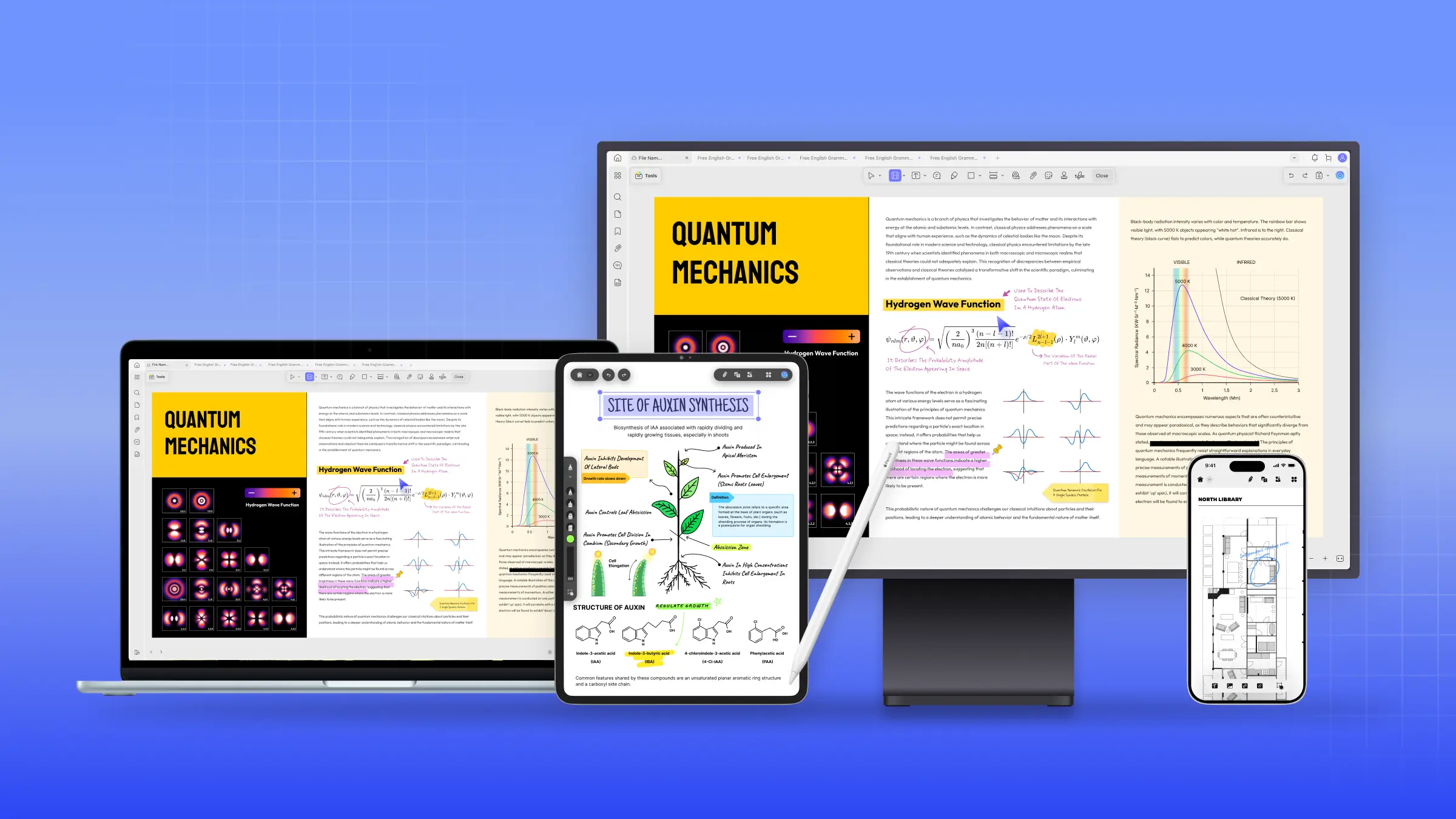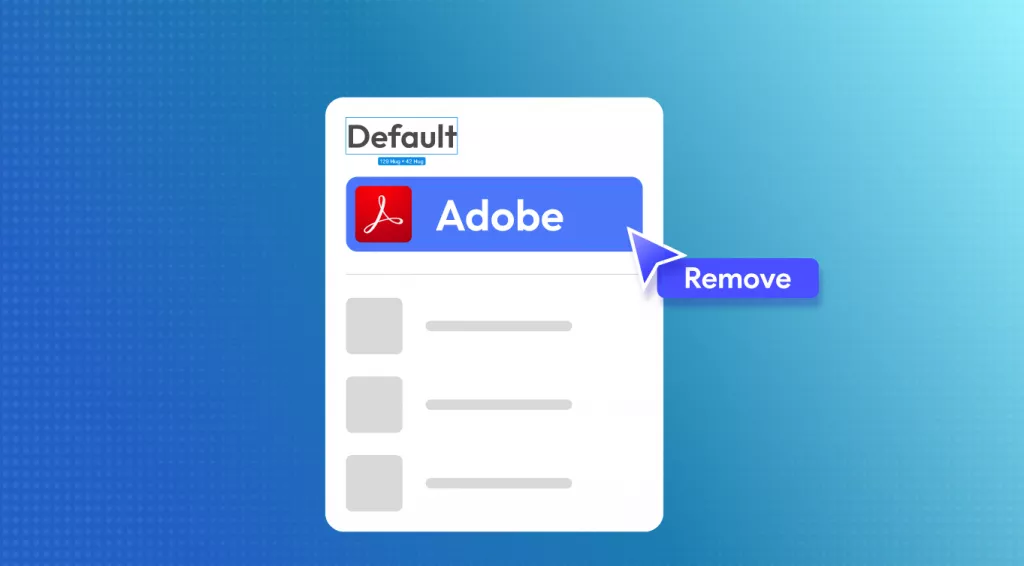Setting clear goals and objectives is essential for success at any life step. Whether leading a team or working solo, understanding the differences between these two concepts is crucial for ensuring that you are on track to meet your goals.
In this article, we will explore the distinctions between goals vs. objectives and techniques for setting and measuring them. We will also provide examples of incorporating them into your daily routine to achieve your desired outcomes. So, let's dive in and explore the world of goals and objectives.
Part 1. Goal VS Objective: Definition
As we begin to explore the meanings of goal and objective, it's crucial to recognize that these terms are frequently interchanged, despite having unique definitions. Although both goals and objectives aim for desired outcomes, they differ in terms of duration, characteristics, and overall significance.
What is a Goal?
Goals are overarching targets that provide direction and purpose to individuals and organizations. While they may be abstract and difficult to measure, setting goals is critical in business planning. Goals influence multiple areas of the company, such as mission statements, financial objectives, and marketing strategies. For goals to be effective, they need to be specific, measurable, and achievable.
Objectives and targets can be set to support these goals, providing a roadmap to success. Goal-setting helps to motivate individuals and teams, driving engagement and action toward desired outcomes. With the right goal-setting tools and goal-tracking apps, businesses can generate real results from their goal-setting efforts.
What is an Objective?
Objectives are specific, measurable, and time-bound actions or steps an individual or group takes to achieve a goal. They provide a roadmap for achieving the desired outcome by breaking the goal into smaller, achievable targets. Setting clear and well-defined objectives helps to increase motivation, accountability, and focus on what needs to be done to accomplish the goal.
Objectives should be specific, measurable, achievable, relevant, and time-bound (SMART) to ensure they are achievable and can be tracked. Regularly reviewing and adjusting objectives is also crucial to ensure they remain relevant and aligned with the overall goal.
Differences and Relationships
Goals and objectives are closely related but distinct concepts crucial to success in various fields. A goal is a broad statement defining what one intends to achieve in the long term, while an objective is a specific and measurable step toward achieving a goal. One of the significant differences between goals and objectives is their scope.
Goals are broader in scope than objectives, encompassing a wider range of outcomes that one seeks to achieve. Objectives, on the other hand, are narrower in scope and are geared toward achieving specific targets. However, goals tend to be less specific than objectives. They are often formulated in broad and general terms, such as "increasing revenue" or "improving customer satisfaction."
Despite their differences, objectives, and goals are related and complementary concepts. Objectives are the concrete steps to achieve goals, providing a clear action plan and direction. Conversely, goals provide motivation and purpose, giving meaning and context to the objectives being pursued.
Part 2. Goals VS Objectives: Differences in Purposes
Goals and objectives are two commonly used terms in many different fields. Despite often being used interchangeably, they have distinct differences in their purposes. Goals are broad, overarching statements, whereas objectives are specific, measurable, and time-bound. To further differentiate between the purposes of goals and objectives, look at the table below comparing their distinct purposes:
| Characteristics | Goals | Objectives |
| Direction | Provides a general direction and purpose | Provides specific, detailed direction for achieving goals |
| Focus | Outcome-oriented, focused on the result | Action-oriented, focused on the steps required to reach the result |
| Measurement | Difficult to measure, subjective | Concrete, objective, and measurable |
| Flexibility | Less specific, allowing for greater flexibility | More specifically, with little room for flexibility |
| Purpose | Motivation, inspiration, and vision | Provides a clear roadmap for achieving goals |
Part 3. Objective VS Goal: Differences in Types
Objective and goal are often used interchangeably but have different meanings and implications. Below are the different types of goals, and their explanations, with an understanding of how people should adapt their meaning:
Time-Bound Goals
Such formats of goals display a specific timeline or timeframe that they need to be completed. While it contains a long-term and a short-term outcome, this format of goals usually represents some tasks to be covered under urgent periods. For instance, if a company sets a particular timeframe for a task against a specific project, it is a time-bound goal.
Process-Oriented Goals
As the name displays, this particular set of goals is entirely focused on how the process is being dealt with and completed. While new systems and procedures are introduced during the process, the outcomes are not the priority of the parties involved in it. For example, companies that are looking forward to setting certain performance metrics for measuring the efficiency of a process define such types of goals.
Outcome-Oriented Goals
Goals that are essentially focused on the outcome of a particular project, with no limitations of time or procedures, are referred to as outcome-oriented goals. In such cases, the result is what the parties prefer in all senses. If a client presents certain deliverables that they want to observe in the project, they set outcome-oriented goals for their consumer.
Similar to types of important goals, there are certain types of objectives that you need to know of. Following are the mentioned types of objectives that will help you understand the technicalities involved:
Strategic Objectives
Whenever there's a purpose to a specific project being executed by a party, strategic objectives are defined for creating a vision and a long-term outcome from the project. These are objectives defined by the higher authority for the team to work on. This can be understood with an example where a company specifies to increase its market share under a project, representing a strategic objective.
Tactical Objectives
For long-term projects, a company defines smaller tasks that need to be completed under defined parameters. Such measurable metrics make it helpful to cover long-term plans, which explain the meaning of the specific objective type in the discussion. For example, a company asks an employee to cover 1% of the contact list within a particular project.
Operational Objectives
For covering extensive, complex procedures, a company breaks down the complete project or task into smaller, simple work. When it is done, it is ensured that it represents the easiest and simplest meanings. In this way, it gets easier to complete the entire project. For example, a company defines a daily limit for their employees to complete at all costs, which sets a standard for everyone.
Part 4. Objectives VS Goals: Differences in Time
Objectives and goals are essential components in achieving success, but they differ in time to finish. Goals are broader, long-term statements that outline a project or organization's desired outcome or direction. They are often qualitative and describe the overarching purpose of the project. They typically take longer to achieve, often taking years or even decades to realize fully.
Objectives, on the other hand, are more specific than goals. They represent the tangible results expected to be achieved within a certain period. Objectives are typically set for shorter periods, such as weeks, months, or years, and are often used as stepping stones to achieving broader goals. For example, a company's goal might be to become a leader in sustainable energy production.
To accomplish this goal, the company may establish particular targets, such as decreasing carbon emissions in the next five years, boosting investments in renewable energy sources in the next two years, and creating innovative technologies to improve energy efficiency in the coming years.
Part 5. Objectives VS Goals: How to Measure
Measuring goals and objectives is an essential component of ensuring progress toward success. There are several ways to measure goals and objectives, such as through point systems, yes/no questions, rubrics, data surveys, outputs, and performance reviews. Generally, goals are measured based on progress toward achieving them, while objectives are measured based on how well they are met.
When setting goals and objectives, it is crucial to consider their measurability, and specificity is essential. More specific goals and objectives are easier to measure, and it removes any uncertainty from the equation.
How to Measure Goals
- Ask Simple Questions: Use closed-ended questions to determine if you met your goal.
- Rubric: Write multiple subjective questions about your end goal to which you can assign value. Afterward, use the rubric to determine how close you were to reaching your goals based on various criteria.
- Use Point System: Assign a point system to measure goals with several steps and determine how much of your goal you have achieved.
- Outcomes: Determine the overall outcomes of your actions and whether they achieved something other than what you expected.
How to Measure Objectives
- Accomplishment: To measure quantifiable objectives, monitor how close you were to achieve your target profit, percentage, or quantity.
- Conduct Surveys: If you are working on qualitative objectives, then conduct surveys to gain insight into the success of your objective.
- Monitor Performance: Do a detailed performance review comparing present and past performance.
- Results: List specific results that you were able to gain during the period.
Ultimately, the specific method chosen to measure goals and objectives will depend on how they are set and worded. Measurability should be a core consideration when choosing them, and specificity is essential in the early stages of goal and objective setting.
Part 6. Goals VS Objectives Examples
Understanding the differences between goals and objectives is crucial for anyone who wants to succeed personally or professionally. While goals provide a sense of direction, objectives offer specific steps that can be taken to achieve those goals. Have a look at goals vs. objectives examples to have a clear view:
Goals
- Become a successful entrepreneur.
- Improve overall health and fitness.
- Achieve financial stability.
Objectives
- Launch a new digital or physical product by the end of the quarter.
- Lose 10 pounds in 2 months through regular exercise and healthy eating habits.
- Save $10,000 by the end of the year through careful budgeting and reduced spending.
As you can notice, the goals are broad and general, while the objectives are specific and measurable. Objectives provide concrete steps that can be taken to achieve a larger goal. For example, to become a successful entrepreneur, one might set objectives to research the market, create a business plan, and secure funding. Each of these objectives is measurable and has a specific timeline.
Part 7. The Best Tool to Help You Track Goals and Objects
UPDF is a powerful PDF editor offering various options to help users work with PDFs more efficiently. One of its standout features is the daily planner template that can track goals and objectives, assisting users in staying organized and focused. The UPDF daily planner template can be customized to suit users' needs, allowing them to set goals and objectives, prioritize tasks, and track progress.
Windows • macOS • iOS • Android 100% secure

The template is designed to be easy to use, with a simple layout and intuitive interface that makes it easy to stay on track. In addition to the daily planner template, UPDF offers a range of other features that can help users work with PDFs more effectively. These include annotations to PDFs, organizing PDFs, and allowing users to modify text, images, and other PDF content.
Other Standout Key Features of UPDF
Apart from the above-mentioned key features, there are a few other characteristics that UPDF possesses. Keep a look at the below key features that are of high value to every user:
- UPDF allows users to merge multiple PDFs into a single document.
- You can protect your PDFs with an open or permission password.
- Convert PDFs to other file formats, such as Microsoft Word or Excel.
- Includes batch processing that allows users to apply changes to multiple PDFs.
Steps to Customize and Edit the Daily Planner Template
If you are new to UPDF and worried about customizing the daily planner template, take a sneak peek at the detailed steps below, and you will learn to customize the daily planner in no time.
Windows • macOS • iOS • Android 100% secure
Step 1: Locate Daily Planner Template
Launching the UPDF on your system by double-clicking on the application icon. Afterward, tap on the "Open File" button located on the home screen. Start to navigate the location of your daily planner template file saved on your device and select it. Afterward, hit the "Open" button to load the template file into UPDF.

Step 2: Add Content to the Goals/Objectives Template
Once opened, you will notice the editable fields in the template. To add content to these fields, click on them and start typing. Following this, click on the "Edit PDF" button located in the left sidebar and choose the "Text" tool from the options that appear at the top. Find and click where you want to add the new additional text. Moreover, you can also customize the textual information by choosing the text font, size, and color.

Step 3: Print the Goals/Objectives Template
Once you have completed the required changes, navigate to the "File" tab in the top left corner of the screen, and then choose "Print" from the drop-down menu. On the new window that appears, select your printer and adjust the printing properties. Finally, click the "Print" button to print your daily planner template.
Note: If you wish to preserve your edited daily planner as a distinct PDF file, select "File" and then pick "Save As." Decide the desired location to store the file and assign a new name.
Wrapping Up
As we end this comparison between goals vs. objectives, it is clear that both play a crucial role in achieving success. Goals provide the overall direction and purpose, while objectives break down the steps needed to reach those goals. It's important to remember that neither is more important than the other, and they must work together in a harmonious balance.
Moreover, we recommend using the UPDF and a daily planner template to effectively track and achieve goals and objectives. This powerful tool allows you to track progress and make adjustments as needed, keeping you on track and motivated towards achieving your desired outcomes. So why wait? Start setting your goals and objectives today, and use the UPDF to help you stay on track.
Windows • macOS • iOS • Android 100% secure
 UPDF
UPDF
 UPDF for Windows
UPDF for Windows UPDF for Mac
UPDF for Mac UPDF for iPhone/iPad
UPDF for iPhone/iPad UPDF for Android
UPDF for Android UPDF AI Online
UPDF AI Online UPDF Sign
UPDF Sign Edit PDF
Edit PDF Annotate PDF
Annotate PDF Create PDF
Create PDF PDF Form
PDF Form Edit links
Edit links Convert PDF
Convert PDF OCR
OCR PDF to Word
PDF to Word PDF to Image
PDF to Image PDF to Excel
PDF to Excel Organize PDF
Organize PDF Merge PDF
Merge PDF Split PDF
Split PDF Crop PDF
Crop PDF Rotate PDF
Rotate PDF Protect PDF
Protect PDF Sign PDF
Sign PDF Redact PDF
Redact PDF Sanitize PDF
Sanitize PDF Remove Security
Remove Security Read PDF
Read PDF UPDF Cloud
UPDF Cloud Compress PDF
Compress PDF Print PDF
Print PDF Batch Process
Batch Process About UPDF AI
About UPDF AI UPDF AI Solutions
UPDF AI Solutions AI User Guide
AI User Guide FAQ about UPDF AI
FAQ about UPDF AI Summarize PDF
Summarize PDF Translate PDF
Translate PDF Chat with PDF
Chat with PDF Chat with AI
Chat with AI Chat with image
Chat with image PDF to Mind Map
PDF to Mind Map Explain PDF
Explain PDF Scholar Research
Scholar Research Paper Search
Paper Search AI Proofreader
AI Proofreader AI Writer
AI Writer AI Homework Helper
AI Homework Helper AI Quiz Generator
AI Quiz Generator AI Math Solver
AI Math Solver PDF to Word
PDF to Word PDF to Excel
PDF to Excel PDF to PowerPoint
PDF to PowerPoint User Guide
User Guide UPDF Tricks
UPDF Tricks FAQs
FAQs UPDF Reviews
UPDF Reviews Download Center
Download Center Blog
Blog Newsroom
Newsroom Tech Spec
Tech Spec Updates
Updates UPDF vs. Adobe Acrobat
UPDF vs. Adobe Acrobat UPDF vs. Foxit
UPDF vs. Foxit UPDF vs. PDF Expert
UPDF vs. PDF Expert










 Enrica Taylor
Enrica Taylor 
